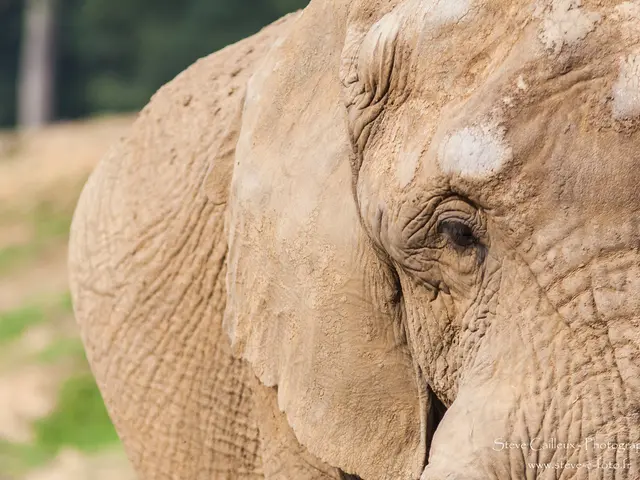A Sinkhole in Florida Devoured These Animals Half a Million Years Ago; Their Bones Unveil a Hidden Era
Around half a million years ago, some unfortunate horses, sloths, and armadillos had an unforgettable encounter with a Florida sinkhole. Fast forward to 2022, and their well-preserved remains were discovered by divers Robert Sinibaldi and Joseph Branin in the murky depths of the Steinhatchee River. This revelation, as detailed in a recent study published in Fossil Studies, has shed new light on a relatively unknown period of the Pleistocene ice ages called the middle Irvingtonian.
Dubbed "diving in coffee" by Sinibaldi, the Steinhatchee River presented them with a thrilling challenge. After spotting horse teeth, the diligent duo unearthed an impressive collection of 552 fossils, including tapir skulls, armadillo bones, and horse remains. These findings fueled excitement among the scientific community, particularly since the middle Irvingtonian period remains underrepresented in the global fossil record.[1][2][3]
Upon presenting their discovery to the Florida Museum of Natural History, the team was met with confirmation that their findings were indeed remarkable. "The fossil record everywhere, not just in Florida, is lacking in this interval. This site is exceptionally significant," declared Rachel Narducci, vertebrate paleontology collections manager and a coauthor of the study. In fact, the Steinhatchee River site is only one of two known middle Irvingtonian sites in Florida, making it a veritable goldmine of information.[1]
One of the most fascinating insights derived from these discoveries revolves around the genus Holmesina. This armadillo-like creature underwent dramatic evolution during the middle Irvingtonian, growing from a 150-pound (68 kg) Holmesina floridanus to a massive Holmesina septentrionalis, which tipped the scales at around 475 pounds (216 kg) [2][3]. By analyzing ankle and foot bones from the Steinhatchee River fossils, scientists gained critical insights into the genetic shift from Holmesina floridanus to its larger counterpart.
The region's abundant horse fossils also offer intriguing insights into the ancient Florida landscape. Richard Hulbert, the study's lead author, revealed that around 75% of the recovered fossils were caballine horses—ancestors of both wild and domesticated horses. Their exceptional preservation, including tooth wear, provides clues about their diets and the environment they inhabited. This abundance of horse fossils supports the theory that the region was once an open landscape with sparser vegetation than contemporary Florida forests.[1][2]
While the majority of discoveries cater to our understanding of the middle Irvingtonian, one rather peculiar find remains cloaked in uncertainty. A unique tapir skull with atypical features was unearthed nearby. Some experts speculate that this could represent a new species, while others see it as an "oddball individual" within the population. With more skeletal evidence, the true identity of this unusual tapir can be elucidated.[1][2]
The Steinhatchee River findings demonstrate the immense potential of hobby fossil hunters collaborating with professional researchers. The seemingly mundane pursuit of diving for fossils has contributed significantly to expanding our understanding of this obscure time period in Florida's history.[1]
The discovery of the well-preserved remains in the Steinhatchee River has highlighted the significance of technology in modern-day exploration, as advanced diving equipment allowed Sinibaldi and Branin to navigate the river's depths.
The study published in Fossil Studies serves as a testament to the intersection of science and the future, providing new perspectives on paleontology and the Pleistocene ice ages.
The evolution of the armadillo-like creature, Holmesina, during the middle Irvingtonian period, as revealed by the discoveries, is a prime example of how science uncovers the oddities and anomalies in the natural world.
The unique tapir skull found near the site raises interesting questions about the diversity of animal species during the middle Irvingtonian, further emphasizing the importance of ongoing research in the field of paleontology.









